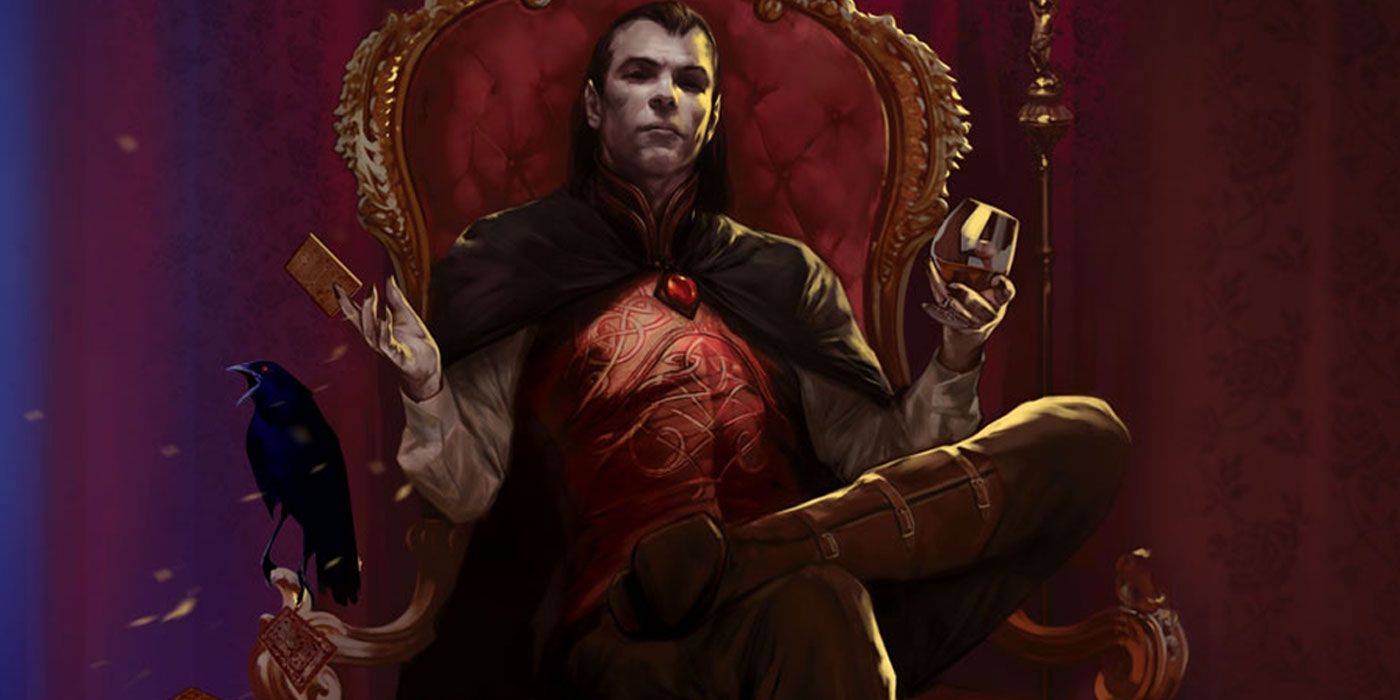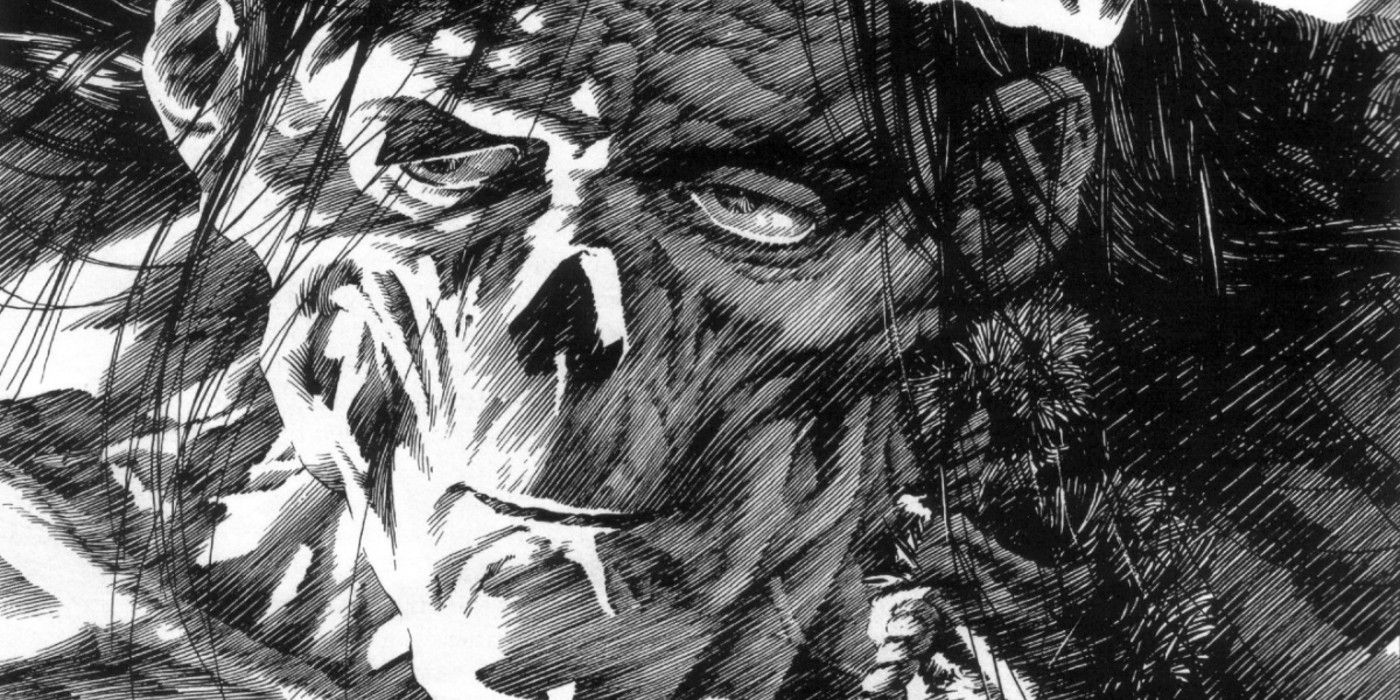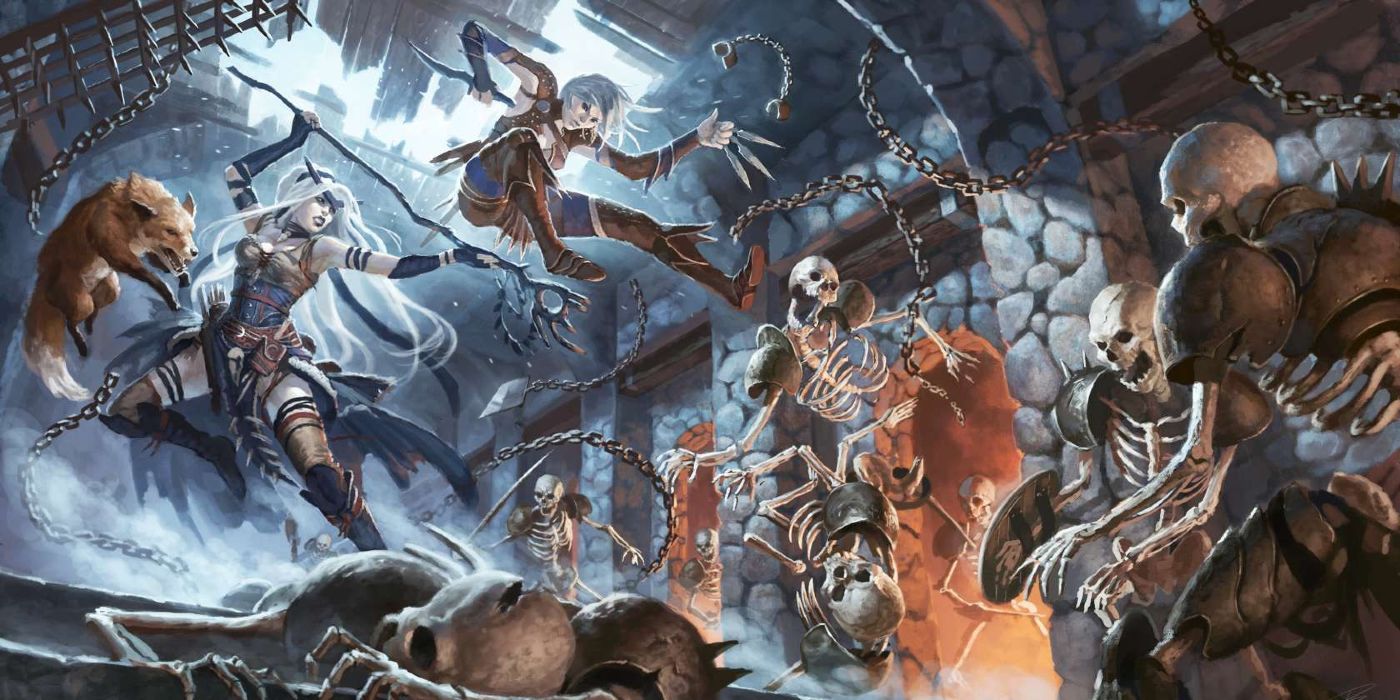The Dungeons & Dragons team has released its first Unearthed Arcana of 2021: Gothic Lineages. Unearthed Arcana are the unofficial playtest versions of material that could make it into published sourcebooks at some point in the future, and if this UA release is any indication, Fifth Edition will continue to wade into the murky waters of race.
The five page PDF by F. Wesley Schneider, Ben Petrisor and Jeremy Crawford includes three new choices for character creation. Unlike past offerings like centaurs, satyrs or hobgoblins, these "gothic lineages" bring a dark edge to the player options and moves away from strictly "humanoid" type characters. Lineages represent a new rule for character creation in 5e that broadens player choices, while also signaling a change in how D&D handles race.
This first set of lineages are called "gothic," and indeed the choices may rekindle hopes for those who want a new Ravenloft supplement or sourcebook. All three options belong properly in the horror department and are great options for players who relish the macabre: dhampir, hexblood and reborn.
A dhampir is a half-human, half-vampire, so fans can finally play D&D as at least 50 percent vampire and not have their character taken over by the Dungeon Master for becoming evil. Like their full-blooded undead kin, dhampir must feed an unquenchable hunger. However, that hunger may not be solely for blood; it could be for energy like Colin Robinson from What We Do in the Shadows, or even dreams.
Hexbloods have already appeared in the wild during Not Another D&D Podcast's second campaign, although they look a bit different here. Hexbloods are the product of humanoids who have made a bargain for power with a hag, and while they gain tremendous power from this bargain (such as fey resilience and hex magic), they also bear the mark of this relationship. Every hexblood has the Heir of Hags, which includes a crown that wraps around their head and marks the hexblood's bargain.
The final new option is called "Reborn," which essentially allows players to roleplay as Frankenstein's monster. These creatures are humanoid, but are also either undead or constructs, so they may have literally been stitched back together by some horrible scientist or necromancer. While gruesome, many players may love the flavor of this option, as well as the fact that Reborn are extremely hard to kill.
Of course, every time the D&D team issues new rules on race, the entire fan base takes note. Since the introduction of Tasha's Cauldron of Everything and the optional race rules included therein, fans on both sides of the issue have remained divided. Some call the optional rules too little too late for a game they see as inherently flawed, while others decried the Tasha's rules as a betrayal of the game's core design.
However, with lead designer Jeremy Crawford putting his name on this new PDF, the D&D team seems to have planted its flag firmly on the side of changing the game's mechanics around race. The design note "Changes to Racial Traits" says, "Following in [Tasha's] footsteps, the race options in this article and in future D&D books lack the Ability Score Increase trait, the Language trait, the alignment trait and any other trait that is purely cultural. Racial traits henceforth reflect only the physical or magical realities of being a player character who’s a member of a particular lineage."
The note continues, "Finally, going forward, the term 'race' in D&D refers only to the suite of game features used by player characters." That's a major shift from the language in the Player's Handbook, as well as the way that D&D has always talked about race. This clearly distances the game mechanics from their problematic real world connotations, tying the idea concretely to player options instead. Now, many of these choices are deemed cultural, so players can choose whatever makes sense for their character.
Reactions to the news varied, with some calling it a further graying out of the colorful portrayal of races in the game. However, many lauded the move as evidence of D&D's commitment to create a more inclusive game. DM Steve, a cohost of the Asians Represent! Podcast has worked hard to help fans see the stereotype-driven nature of older D&D supplements like Oriental Adventures. He saw the design note as ultimately a good thing for the game, and others like Arcanist Press (whose own third-party supplement worked to solve 5e's racial essentialism problem nearly a year before Tasha's was published) argued that the new UA goes further than Tasha's in important ways.
Still, any celebration of these changes ought to wait, at least until D&D codifies the rules in an official publication. Perhaps 2021 will see even more new lineages unearthed. For now, players can enjoy their new gothic characters and all the horror stories they tell with them.



